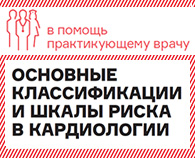Atrial Fibrillation in Patients With Cryptogenic Stroke
Study Question:
How often is clinically unapparent paroxysmal atrial fibrillation (AF) detected in patients with cryptogenic stroke?
Methods:
The subjects of this study were 572 patients (mean age 72 years) with an ischemic stroke or transient ischemic attack (TIA) of unknown cause within the prior 6 months. A standard neurological evaluation, electrocardiogram, echocardiogram, and 24-hour Holter monitor were performed at the time of the stroke/TIA. Patients known to have AF were excluded. The patients randomly were assigned to undergo monitoring with a 30-day event-triggered loop recorder (n = 286) or with an additional 24-hour Holter monitor (n = 285). The primary outcome was detection of AF ≥30 seconds in duration within 90 days of randomization.
Results:
AF was detected in significantly more patients in the loop recorder group (16.1%) than in the Holter monitor group (3.2%). The AF lasted >2.5 minutes in 9.9% of loop recorder patients compared to 2.5% of the Holter monitor patients.
Conclusions:
The authors concluded that clinically silent AF is detected in patients with cryptogenic stroke/TIA much more often by 30 days of ambulatory monitoring than by a 24-hour Holter monitor.
Perspective:
In patients without an apparent cause of an ischemic stroke/TIA, it is reasonable to assume (but not proven) that clinically silent AF detected by monitoring is a causative factor. Current guidelines recommend a 24-hour Holter monitor in patients with cryptogenic stroke. This important study makes it clear that AF is much more likely to be detected with a 30-day loop recorder than a 24-hour Holter monitor, allowing a greater proportion of patients to potentially benefit from anticoagulation for secondary prevention.
Source: anticoagulation.cardiosource.org






